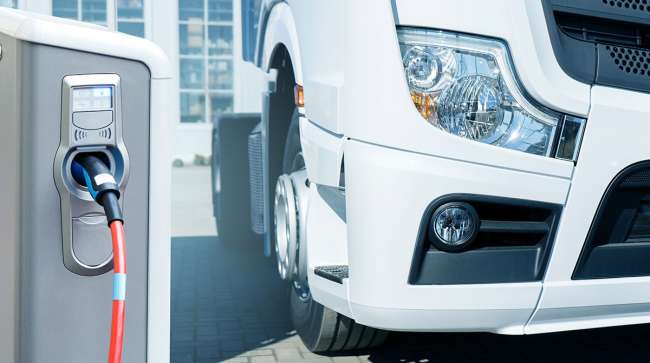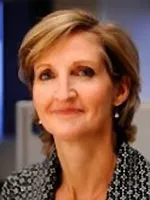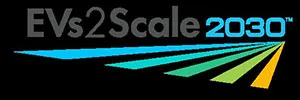Staff Reporter
Trucking Can Help Shape EV Future in EPRI Collaborative

[Stay on top of transportation news: Get TTNews in your inbox.]
Trucking companies are being encouraged by the Electric Power Research Institute to seek its help preparing for electrification of heavy trucks and collaborate about how the nation’s 3,200 utilities can provide future energy needs.
Britta Gross, transportation director at EPRI, a Palo Alto, Calif.-based independent nonprofit energy research and development institute founded in 1972, told Transport Topics about its new EVs2Scale2030 initiative. The three-year plan has been launched to help stakeholders work with utility companies to coordinate for greater usage of zero-emission electric vehicles.
“EPRI essentially is the research arm of the utility industry, and this is what we can affect. Our expertise is heavily in the grid, from a transmission, generation and distribution standpoint,” Gross explained, adding that EPRI has decades of expertise in transportation electrification.
EVs2Scale2030 involves electric companies, fleet operators, auto and truck manufacturers, and charging providers. It also is coordinating with federal agencies and national laboratories, Edison Electric Institute, American Public Power Association, National Rural Electric Cooperative Association and the Alliance for Transportation Electrification.
Amazon.com Inc. was the first company as a logistics provider to join. Data collaborators include Daimler Truck North America, Paccar Inc. and Volvo Group North America. Amazon ranks No. 1 on the Transport Topics Top 500 list of the largest global freight companies.
On the Grid
Founding electric utility members include:
• Austin Energy
• CenterPoint Energy
• Con Edison,
• FirstEnergy Corp.,
• Great River Energy
• National Grid
• New York Power Authority
• Omaha Public Power District
• Pacific Gas and Electric Co.
• Portland General Electric
• Sacramento Municipal Utility District
• Salt River Project
• Seattle City Light
• Southern California Edison
• Southern Co.
• Xcel Energy
Gross said trucking industry stakeholders are working with EPRI since the nonprofit is focusing on overcoming barriers for widespread EV deployment such as preparing the national electrical grid about where EV trucking loads will be, necessary electricity feeder systems, substation location requirements, projected times for charging and how large electrical loads will be.
Describing Amazon as “a very forward leaning logistics provider,” Gross said the company is working with EPRI because it has fleet depots across the county for its distribution centers.
“They understand it’s really important to send these clear demand signals about where, when and how big the [electricity] loads are going to be at their depots. Where is it likely for those last-mile trucks to be charged? In what year are these loads showing up so that everyone in the utility industry has as much early notice as possible where and when distribution centers need to be prepared to support charging at those depots in 2023, in 2025, in 2027 and beyond,” she said.

Gross
She emphasized that trucking companies, particularly fleet operators, can play a vital role in preparing utilities to meet electricity demands by sharing information now.
“This early notification about where and how big these loads are is hugely important for grid operators, including rural co-ops and public power utilities like the municipal utilities. Early notices are the secret sauce. This is what’s going to allow the grid to be prepared,” Gross said. “EPRI will leverage its industry partnerships to mobilize utilities, fleet operators, the automotive industry and charging providers, and coordinate with federal agencies and [national] labs to support the rapid deployment of millions of electric vehicles — while minimizing grid impacts and enabling critical benefits to the nation’s grid.”

She said trucking companies now have the opportunity to shape how transportation is charged for electricity and at what times, especially since charging is flexible and some segments of the trucking business involve carriers that return to depots at night, when electricity costs are lower since power demand drops.
“Amazon is just one logistics provider having to work with 3,200 electric utilities of those three different variations of investor-owned, municipal and rural co-ops,” Gross said. “So it’s important to put together tools as we are in EVs2Scale to allow these industries to cooperate and work together on where, when and how big the loads are going to be so the industries can be better prepared for where the charging is going to occur and the electric grid is really prepared to serve those loads.”
ERoad's Craig Marris gives advice on carving out a practical, effective road map to a greener and more efficient fleet. Tune in above or by going to RoadSigns.ttnews.com.
EPRI launched eRoadMap, a free interactive tool that shows a U.S. map with near-term electrification needs projected from 2024 to 2030.
“When you segment out the trucking sector, the easiest to electrify and charge are last-mile trucks like Amazon. Then there are the return-to-depot trucks that go out to 200 maybe 300 miles a day and also return. Those are the second easiest to electrify,” Gross said “Then there’s the trucks that go from Point A to Point B, where charging can be located at both ends. So these ranges are very easily accommodated by even today’s battery technology. You just have to figure it out and find solutions.”
Because the trucking sector is complicated with different sectors and uses, she said the best approach to electrification is “to start chipping away at the ones that are quite easy to do today.”
Gross encouraged trucking companies to reach out to EPRI’s experts for help.
“It’s important to begin to take those first steps now and then work to share information about what you’re doing so that we can bring together this complex fleet landscape with the complex utility landscape to meet each other in the middle in a much more optimal way,” she said.
Want more news? Listen to today's daily briefing below or go here for more info:


